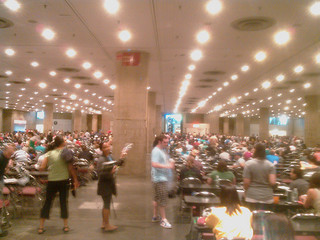Now that California has come to its senses and done away with its horrific 3-hours-long performance tests, I am aware of only only one format for the performance test: a 90-minute examination.
As I have mentioned elsewhere in this blog, I have passed both the Oregon and the California bar exams which both had performance test components. Below is what I think you should do to ensure you will write the best PT response possible during the bar exam.
General Preparation
Step 1: Read at least two examples of PT questions and answers from your jurisdiction.
This will give you a sense for how the diverse information contained in the Library and File portions (see below) of the PT get converted into a passing answer. You can get sample PTs from your bar prep provider, your jurisdiction’s website, or from other jurisdiction websites.
Step 2: At the proper time in your study schedule, do your first practice PT.
Do not write the answer out, but merely outline the answer. Then read the sample answer and see how much of the information you gathered and how closely you got the order. You probably missed a few things. That’s okay, make a note of what you missed and try to figure out why. This is the key: self-knowledge and understanding of your errors. You can plow away and write 30 sample PTs, but if you never review and learn, you will have much less success.
Step 3: At the proper time in your study schedule, write out an entire PT.
I would suggest doing a maximum of 5 sample PTs in their entirety. I think I probably did 5 when I took the Oregon bar and 3 when I took California. For me, writing out an entire PT is soul-killing. The PT has nothing to do with memorization or knowledge and everything to do with how you spot relevant pieces of information. So, once you can do that, there really is no need to practice writing them out.
The real reason to practice writing them is to make sure you can get the job done within 90 minutes. In other words, you need to practice writing out entire PTs only until the point when you know the time pressure is no longer an issue for you. Then, you can just review PT tests periodically and do outlines to make sure you can spot all the relevant facts and legal authority.
Okay, so now I have given you the high-altitude overview. What about the neighborhood map? In other words, how do I write the thing?
Here is my approach. Think about it, try it once. If it works for you, great; if not, try to figure out why not and then modify it to suit your style.
Structural Anthropology of the PT
The PT consists of a File and a Library. The File contains the assignment memorandum, format guidelines, and the facts you need to complete your task. The Library contains the various legal authority (statutes and cases, usually) you need to interpret those facts.
First, read the assignment memorandum in the File.
Second, skim (spend a max of 5 minutes) the entire Library, looking for anything that might be useful (e.g., multi-pronged tests, key words in statutes, etc.). Put a check mark in the margin next to these useful bits.
Third, skim (again, max 5 minutes) the entire File, noting facts that seem to relate to the assignment memorandum and the Library. Check marks in the margins again.
Fourth, read the assignment memorandum and the format guidelines memo (if there is one) carefully. Write down the major topics in basic outline format on a separate sheet of paper. [NB: some people who type the exam will type the outline into their computer and then fill in the written portion of the PT. Although I typed both of my bar exams, I could not do that. If I could, I probably would have as it seems to increase efficiency and permit more time to write.]
Fifth, read the Library carefully and fill in the various legal tests and statutory language that is relevant to the topics you generated by reading the assignment memorandum. If necessary, re-write your outline on another sheet of paper.
Sixth, read the File carefully for facts applicable to the legal authority you have culled from the Library. Write the basic fact and a citation (i.e., the page number so you can find it again) to that fact.
Seventh, review the outline and make sure it makes sense. If anything seems confusing, find the needed information to de-confuse. [By now, a maximum of half your test time should have expired.]
Eighth, write . . . quickly.
P.S. -- Want a FREE copy of my Bar Exam Mind audiobook?
You can get a free copy of my audiobook when you sign up for a free trial at Audible. Get the details by clicking here.






